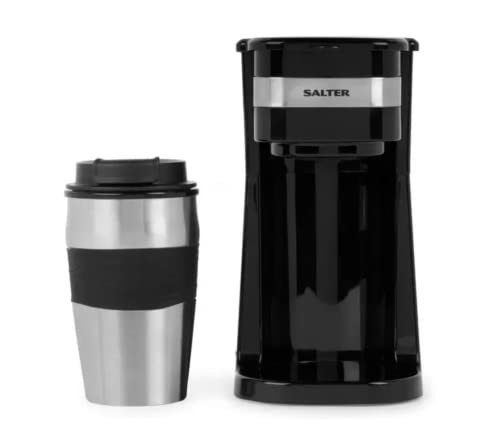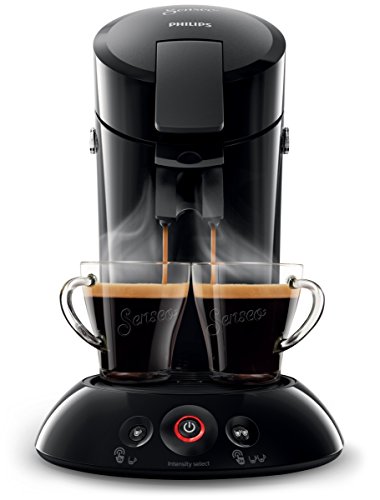7 Things You've Never Known About Machine Coffee
페이지 정보
작성자 Elke 작성일24-12-21 16:37 조회5회 댓글0건관련링크
본문
 What Goes On Inside a Machine Coffee Maker?
What Goes On Inside a Machine Coffee Maker?Coffee machines allow you to enjoy a cup of joe at home. Some of the most popular coffee machines models come with a programmed clock and even a built in grinder.
When you switch on the power the thermostat controls a heating element that circles the warming plate. It also has a water tube constructed of aluminum that flows through it.
Cold-Water Tube
A machine coffeemaker takes the water you pour in and turns it into coffee. It does this by boiling the water and passing it through a system which creates pressure to push it through a capsule of ground or soluble product. These machines use up to 15 bar of pressure, as opposed to coffee percolators that run at a mere one bar.
There is a reservoir in the bottom of your machine that looks like a bucket and holds the water that is used to make your beverage. This reservoir has a hole at the bottom and connects on one side to the tube inside the heating element and on the other, to an white tube with an insulation that extends from the bottom of the machine to the faucet.
When you turn on your machine, the water in the reservoir is pushed up into the heating chamber and the thermostat tells it to heat up. As the water heats, it expands. This causes a screen to move beneath a portafilter which has been filled with espresso and was tamped. The pressure causes the screen to break through the filter, allowing the espresso into your cup.
The espresso that is produced by your machine is a rich and flavorful coffee. It can come with varying levels of acidity, depending on the kind of coffee machines uk you select. If the brew you are drinking is not pleasant Try using a different filter or more coarsely ground coffee machine [simply click the up coming webpage] beans. If the problem persists you should contact a licensed technician to perform a de-liming process. This problem is usually caused by lime scale.
Hot-Water Tube
The white tube that has insulation at the bottom of your machine is the hot-water tubing. It carries hot water from the heating unit to the faucet on the top of the coffee maker. The water is saturating your grounds, bringing their flavor into the cup of coffee you are waiting for.
Some coffee makers have an option to keep the water warm, so that it's ready the moment you wake up. This is done by making use of a heater to create a small amount of steam. The steam is directed into the spout so that your coffee remains warm until you are ready to pour it.
Although it might appear as though coffee makers are complicated and expensive, the majority of models are fairly simple to operate and have very few moving parts. Regular cleaning and use will keep your machine in good condition for many years to come.
A majority of coffee machines have an integrated coffee grinder that lets you add the ground coffee to the portafilter, secure it in place, and then flip the switch to start the brewing. When the switch is turned on and the pump starts to pressurize the water in the heating chamber until it's around 220 psi of pressure.
One of the biggest frustrations when making a cup of coffee machine home is that you have to refill the reservoir frequently. Certain manufacturers have developed coffee machines that connect directly to a water line and allow you to eliminate the reservoir entirely. There are kits available for those who wish to do it themselves. They can change any machine to an espresso maker that connects directly to a household water line. The process is a bit more involved and involves drilling holes in your machine to accommodate the adapter. This could weaken the structure of your coffee maker, causing cracking around the drilled areas. It is recommended to purchase a purpose-built coffee maker that is designed to accept a direct water line for best results.
Resistive Heat Element
The heater is made from metal and has a particular resistance to electricity. It resists the flow of current but without stopping it completely, and some energy is converted into heat. This is what heats up the water in the boiler of your coffee maker.
The heating element is situated on the left-hand side of the machine's base. It is shaped like the filament of a lightbulb, or the electric toaster. It is made up of an aluminum extrusion with two sections, a tube for water to flow through, and the heating element itself that is resistive (Check video here). The resistance in the coiled wire is what causes it to heat up when it gets electricity.
When you turn on your coffee maker, the device is heating the aluminum water tube until where it reaches a point of boiling. Then, the bubbles rise through the white tube and are sprayed over your coffee grounds with the shower head. This sprayed water picks up the essential oil essence of the ground coffee beans while it travels down and it also has caffeine.
If your coffee maker isn't producing hot water, it's most likely because the heating element or pressure switch thermostat is defective. Both of these can be tested using a multi meter conducting a continuity test. Connect one pole to the electrical connection and the second to the flange body and it should show a number below 1. If it does not, then the thermostat or switch needs to be replaced.
The other major component of your coffee maker that can be a source of issues is the water pump or reservoir. It can get clogged up with lime and that's why you must run a mixture of water and a descaling solution through it.
Warming Plate
A warming plate is an heated metal surface which keeps the coffee warm after it has been brewed. This feature is popular among diner coffee drinkers and is a great addition to the kitchen of a home. The warming plate is susceptible to get rusty and ruin the taste, so it is important to clean it regularly. The best method of cleaning a coffee maker heating plate is to use a mix of oxalic acid and water.
Oxalic acid is a powerful cleaning agent that can be used to eliminate rust from pipes, sinks gas stove burners and many other household objects. It is a highly effective method of cleaning the warming plate that is rusty in your coffee maker. It is available from many hardware stores. You should always be careful when using this product, because it could cause burns and other injuries if not handled properly.
If you are planning to clean a coffee maker with rust heating plate, first ensure that the coffee maker is disconnected. This will avoid any damage that could be caused by the heat of the cleaning products. Rubber gloves are also recommended since oxalic acid can be harsh on the skin.
Then then, sprinkle some white vinegar over the rusty portion of the coffee maker's heating plate. The vinegar will react chemically with baking soda and dissolving the rust. Then, use a brush or rag to scrub the area until it's clean. If your coffee maker is extremely rusted, you may need to repeat the process several times to get it completely clean. Make sure that the oxalic acid has completely evaporated before plugging your coffee maker back into and start using it again.
Aluminum Water Tube
When you switch on your machine, it will begin making the coffee for you. It may seem simple but it's not easy to transform a few spoonfuls of coffee grounds and some hot water into a steaming hot beverage.
The cold water is poured into the aluminum tube beneath the resistive heating element through an opening at the bottom of the reservoir. The aluminum water tube begins to heat up, and when it gets to its boiling point, bubbles start to form that push the water partway up the white tube that is located in the middle of your coffee maker.
The hot water flows out from the top of the tube and transforms into an elongated disc, also known as the shower head. (Or basket in certain machines). The hot water is sprayed over the coffee grounds, absorbing its oil essence.
The water then flows over the coffee, and through the filter back into the pot. The pump's oscillating force is responsible for this. The shearing force induced by the bubble's expanding and contracting boundaries removes ground coffee particles from the water, leaving behind a strong espresso-like beverage.
It is important to remember that your machine relies on a myriad of components, which are interconnected. If you hear strange noises or feel vibrations this could be due to a loose part. Loose components can create noise and weaken connections. This can cause further issues.

댓글목록
등록된 댓글이 없습니다.
